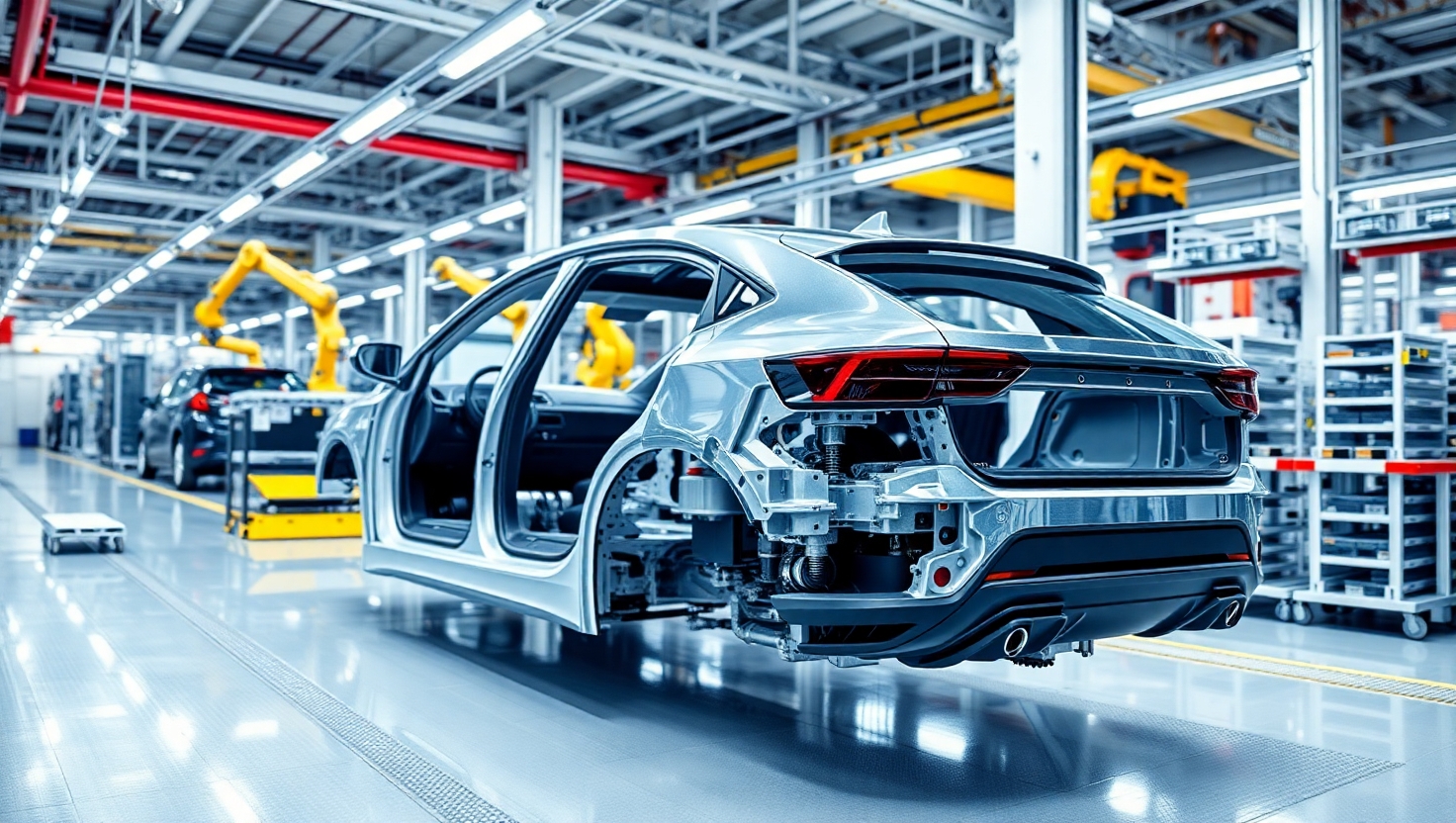Why Aluminum Extrusions Are Critical to the Future of Electric Vehicle Manufacturing
Published by: ALUTimes | Date: July 17, 2025
Table of Contents
- Introduction
- Lightweighting & Efficiency
- Battery Enclosures and Protection
- Crash Management & Safety
- Design Flexibility & Assembly
- Thermal Management Solutions
- Cost-Effectiveness and Lifecycle Advantage
- Global Trends and OEM Adoption
- Case Study: Tesla’s Use of Aluminum Extrusions
- The Road Ahead: EVs, Policy, and Material Innovation
- Disclaimer
Introduction
The electric vehicle (EV) revolution is reshaping how vehicles are designed, built, and consumed. At the heart of this transformation lies aluminum — particularly aluminum extrusions. From battery protection and lightweight chassis to crash management and thermal efficiency, aluminum extrusions are becoming indispensable in EV manufacturing. In this article, we explore the key roles aluminum extrusions play in enhancing EV design and performance in 2025 and beyond.
Lightweighting & Efficiency
Reducing weight is crucial for EV range. Aluminum extrusions, being 30–40% lighter than steel, help OEMs improve battery range without compromising safety or structural integrity. For example, replacing steel frames with aluminum extrusions can cut vehicle weight by up to 150 kg, resulting in a 10–15% increase in range. Major EV players like Lucid Motors and BYD now heavily rely on extruded aluminum frames.
Battery Enclosures and Protection
Battery enclosures must be strong, fire-resistant, and corrosion-proof. Aluminum extrusions are ideal for this due to their ability to form sealed, lightweight, and crash-absorbing cages around lithium-ion cells. They also resist thermal damage and meet evolving regulatory standards in Europe and the U.S. With modular designs, extrusions allow for faster assembly and replacement of battery trays.
Crash Management & Safety
Aluminum extrusions play a major role in energy absorption zones. Crumple zones made from multi-cell extruded aluminum tubes absorb collision energy effectively, protecting passengers and battery modules. Safety is paramount in EV design, and extrusions provide both strength and controlled deformation. Studies show extruded crash boxes can absorb 20–25% more energy per kg than stamped steel.
Design Flexibility & Assembly
One of the greatest advantages of extrusions is geometric flexibility. From complex cross-sections to integrated mounting points, aluminum profiles streamline part integration, reducing assembly time and complexity. Automakers now design entire EV skateboards using custom extruded aluminum profiles that integrate cooling lines, wire channels, and structural ribs—all in one extrusion.
Thermal Management Solutions
Aluminum’s thermal conductivity is a game changer for EVs. Extruded heat sinks, cooling plates, and thermal interfaces are used in power electronics and battery systems. Custom extruded profiles maximize surface area for airflow and liquid cooling. For example, Mercedes EQ series uses extruded battery baseplates with embedded coolant channels to maintain optimal cell temperatures.
Cost-Effectiveness and Lifecycle Advantage
While aluminum is costlier than steel per kg, its benefits in lifecycle value are substantial. Lower tooling costs, recyclability, reduced maintenance, and weight savings translate to long-term gains. EV platforms using aluminum extrusions are often modular and shared across models, allowing OEMs to reduce R&D and production costs over time.
Global Trends and OEM Adoption
In 2025, more than 70% of global EVs use aluminum extrusions. China leads with government mandates, followed by the U.S. and EU. Companies like Tata Motors, Tesla, NIO, Hyundai, and VW have increased extrusion use by over 40% in new EV platforms. The Indian extrusion sector, especially in Gujarat and Pune, is ramping up capacity to meet auto-grade standards and export demand.
Case Study: Tesla’s Use of Aluminum Extrusions
Tesla pioneered the use of large castings and extrusions in the EV sector. Their Model Y and Cybertruck platforms feature gigacast rear structures and aluminum extrusion battery enclosures. This enables fewer parts, faster production, and better range. Tesla sources high-strength 6xxx series alloys and custom profiles with friction stir welding to enhance rigidity and heat resistance.
The Road Ahead: EVs, Policy, and Material Innovation
With tightening emissions norms, OEMs are under pressure to go lighter and more efficient. Policies such as the U.S. IRA and EU Fit for 55 emphasize local, sustainable manufacturing. Aluminum extrusions—especially recycled and low-carbon variants—fit perfectly into these frameworks. Advances in alloy chemistry, like 7000-series for structural parts, and AI-based extrusion simulation will drive the next leap in EV-aluminum synergy.
Disclaimer
This article is for informational purposes only. ALUTimes does not endorse any specific vehicle brand. Data is based on public reports and industry insights as of July 2025.

